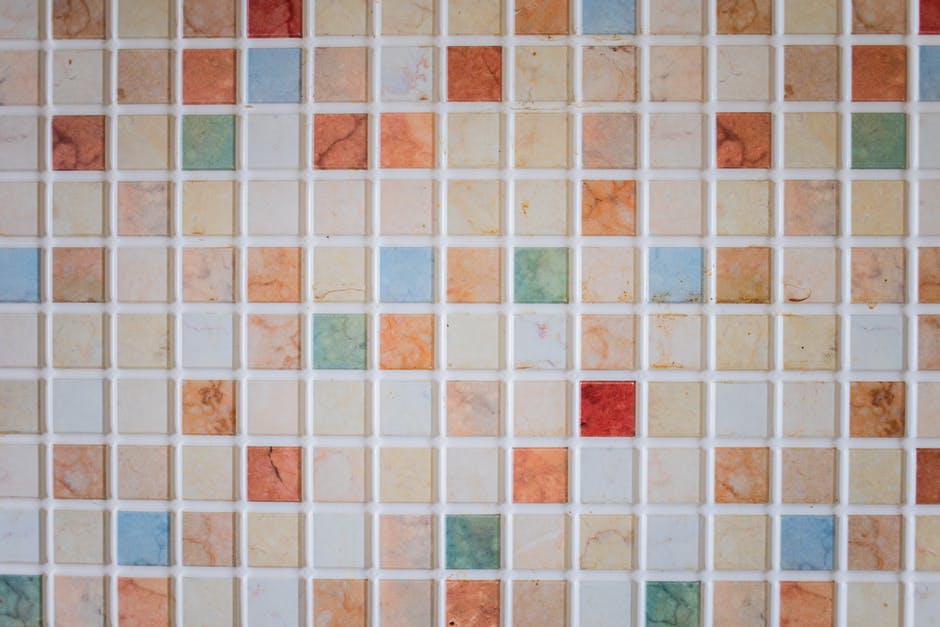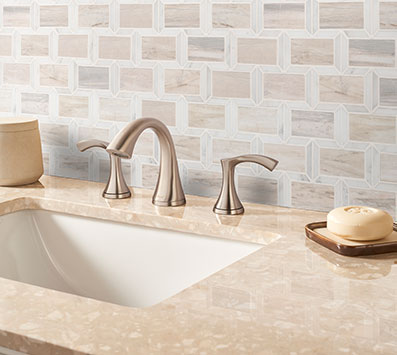Did you know that the third most common type of flooring in America is tiling? It might be difficult to select the ideal tile for your tile installation because there are so many variations available. You may find the solution in textured tile if you’re looking for something distinctive. Beyond meeting your basic flooring demands, it offers a range of other functions in addition to giving depth and character to your floor.
We’ll look at five innovative uses for textured tile in your house in this blog article, from accent walls to gorgeous outdoor patios. Continue reading to see how textured tile may make your area into something amazing.


What is Textured Tile?
Any type of tile with a tactile surface is textured tile. The textured surface is created using a variety of methods. This includes embossing, engraving, and other surface treatments.
A textured tile for interior design can come from a variety of materials. This includes natural stone, ceramic, porcelain, and glass.
Each material has a distinct texture and set of properties that lead to various design outcomes.
Best Projects for Textured Tile
Many home renovation projects can benefit from the usage of textured tile because it is a flexible material. It gives a distinctive touch of design and texture to every area, from the walls to the ground.
Here are some of the best uses for textured tile in case you’re thinking about using it for your upcoming project:
1. Give the Depth and Dimension of the Walls
One of the most often utilized building materials to create depth and character is textured tile. Whether you wish to brighten your bathroom or add interest to the walls, textured tiles create a strong visual interest.
A textured tile is ideal for embellishing walls by fusing different colors and textures or by creating a cohesive pattern. Slate or travertine natural stone tiles, as well as ceramic tiles with embossed or raised patterns, are a few popular options for textured wall tile.
A tile cutter, trowel, grout float, and spacers are among the basic tools you’ll need to install textured tile on walls. Before beginning the installation process for wall tiling, you must make sure that your walls are clean, smooth, and level.
2. Create Eye-Catching Backsplashes
In bathrooms and kitchens, textured tile is also frequently used as a backsplash. Besides being useful because they shield the walls from stains and water damage, backsplashes can also act as the room’s focal point.
From traditional subway tiles to complex mosaic patterns, textured tile backsplashes are available in a variety of shapes and designs. Popular backsplash materials include natural stone, glass tiles with textured surfaces, and ceramic tiles with raised designs.
To install a textured tile backsplash, you will need similar tools to those used for wall installations. For example a tile cutter, trowel, grout float, and spacers.
You will also need to measure and plan your layout to ensure a seamless and professional-looking finish.

3. Add Interest to Floors
Another great option for giving flooring interest and texture is textured tile. Textured tile flooring can offer a long-lasting and aesthetic visual interest. Whether you are trying to make a statement in your entranceway or give your bathroom some personality.
For floors, common textured tile varieties include ceramic tiles with raised or embossed patterns, porcelain tiles with a rough or brushed finish, and natural stone tiles with a honed or tumbled surface.
It is crucial to use a sturdy and non-slip material when laying textured tile on floors. To stop water damage and stains, you must also make sure the tiles are properly sealed.
4. Enhance Outdoor Spaces
Textured tile is not just for indoor use. It can also enhance outdoor spaces such as patios, walkways, and pool areas. Outdoor textured surfaces can be a low-maintenance and long-lasting alternative to standard paving materials like concrete or stone.
Popular types of textured tile for outdoor use include natural stone tiles like slate or sandstone, as well as porcelain or ceramic tiles with a rough or textured finish. These materials can withstand environmental exposure and are resistant to fading, cracking, and stains.
If you are installing textured tile outside, be sure the ground is firm and level. You might need to apply a sealer or other protective covering to the tiles to help them withstand exposure to the elements.
5. Create Unique Accents and Features
Textured tile can also create exclusive accents and features in your house or garden. Textured tile can give a versatile and intriguing solution for creating personalized fireplace surrounds or adding interest to garden walls.
Ceramic tiles with raised patterns or embossed motifs, as well as natural stone tiles with unique textures or colors, are popular forms of textured tile for accents and features. You can mix these materials with other design components such as wood or metal to produce an individualized appearance.
To install textured tile as an accent or feature, you will need to plan your layout and design. You may also need to use specialized tiling tools or techniques depending on the complexity of the project.

Textured Tile Design Tips
Ready to take your textured tile game to the next level? Let’s explore some top tips and tricks for designing with textured tiles.
Choosing the Right Textured Tile for Your Space
When selecting a textured tile, consider the space used. If the space receives heavy foot traffic, choose a tile with a high PEI rating.
If the space is prone to spills or moisture, go for textured tile that is non-slip and water-resistant. To ensure the tile complements the room’s general design style, consider its color and pattern.
Matching Texture with the Overall Design Aesthetic
Textured tiles can improve a room’s overall appeal. In a rustic or Mediterranean-style environment, for instance, a rough natural stone tile may provide an earthy, organic feel. A smooth, glossy tile might offer a sleek, modern touch to a contemporary or minimalist design.
Choose a textured tile that complements and improves the home decor already in place.
Using Different Textures to Create Visual Interest
The ability to mix textured tiles to make aesthetically pleasing patterns and designs is one of their many benefits. Combine various textures, materials, and hues to produce a striking and original design. For instance, you can produce remarkable contrast by pairing smooth glass or porcelain tiles with rough natural stone tiles.
Installation and Maintenance of Textured Tile
To achieve a smooth and level installation of textured tile, it’s essential to use the proper equipment and methods. Depending on the application, you’ll need a few basic tools to lay textured tiles.
The following are some of the most used tools for dealing with textured tiles:
- A tile cutter used to size and shape tiles into straight or angled cuts
- Utilize a trowel to apply adhesive or cement to a surface prepared to receive tiles
- Use a grout float to apply the grout to the tile’s surface and smooth it into the joints
- Spacers maintain a consistent gap between tiles
- During installation, you can use a tile leveling system to make sure the tiles are straight and level
- Tile saw for cutting large or thick tiles
- Diamond hole saw for drilling holes in tiles for fixtures like faucets or showerheads
Choosing tools that are suitable for the material you are working with is crucial when working with textured tile. Specialized cutting implements or sealants, for instance, might help prevent water damage to a natural stone tile.
Other materials and supplies, such as adhesive, grout, and sealant, might be required besides these fundamental tools. For all tools and materials used in your tile installation project, be sure to read and follow the manufacturer’s instructions very carefully.
Furthermore, textured tiles must be properly sealed and maintained. This is to guard against stains, scratches, and other harm. With proper maintenance, tiled floors can last a lifetime.
Using Textured Tile for Stunning and Long-Lasting Results
Due to its adaptability and aesthetic appeal, textured tile is a popular choice for many. Textured tile offers homeowners several advantages.
From adding eye-catching accents and features to offering a long-lasting and low-maintenance flooring alternative. It’s crucial to use tools and procedures that are suitable for the material while dealing with textured tiles.
Additionally, to guarantee a finished product that looks professional, think about spending money on high-quality tile installation tools if you are new to the process or if your project requires specialized tools.
Contact us today to learn more about the best tiling ideas for you.


Post a comment